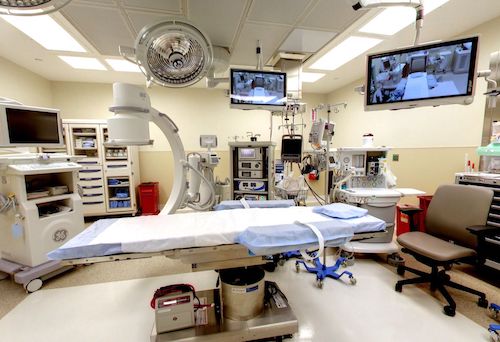July 16, 2024- With few exceptions, the race of procedures to the lowest-acuity setting shows no signs of letting up. Statistics indicate the ambulatory surgery market is big and getting bigger. But reimbursement issues, legislation and shifting ownership patterns will no doubt shape the outcome. “We anticipate a variety of increasing surgical procedures to shift to outpatient,” says Jason Grzyb, vice president, non-acute sales for Cardinal Health’s U.S. Medical Products and Distribution business. “As ASCs continue to be met with complexities like evolving regulatory compliance, new technology advancements, supply chain management and more, we’re still seeing significant growth and expansion within the industry. ASCs are providing a convenient, cost-effective alternative for surgical procedures – while still delivering safe, quality care in a highly competitive market.”
According to Fortune Business Insights, the U.S. ambulatory surgical center market size was valued at $43.70 billion in 2022 and is projected to grow to $75.20 billion by 2030. In terms of ownership, the physician-owned segment accounted for the largest market share in 2022, while the corporate-owned segment was anticipated to record the highest compound annual growth rate (CAGR) during the forecast period of 2023-2030.
Complex procedures, complex technology
Improvements in medical technology continue to facilitate the migration of medical and surgical procedures to outpatient settings. Cardiovascular and orthopedics are often cited as two specialties likely to see the greatest growth in the near future.
“Historically, there has not been a consistent and transparent process regarding the approval of procedures for reimbursement in the ambulatory surgical centers,” says Andy Poole, FACHE, MSHA, MSPT, associate director, strategy and innovation, for healthcare technology and safety company ECRI. That makes it a challenge to predict what procedures are most likely to shift to the outpatient setting in the next six or seven years. “However, following recent trends, I would expect a continued focus on growth in the cardiovascular segment. As this is limited in many states by regulatory and reimbursement barriers, a growth opportunity for diagnostic and interventional procedures remains as these restrictions are reduced and safe outcomes are established.
“Another area of expected growth would be where there is already a history of success,” he says. “I think we can look to orthopedics to be a leader there. Given the success of total knee and total hip arthroplasties, I would expect total shoulder replacements to be next. Additionally, as more spine cases are demonstrated to be safe in the outpatient setting, there are opportunities to add additional types of procedures.”
Read More in the latest issue of Repertoire Magazine.
